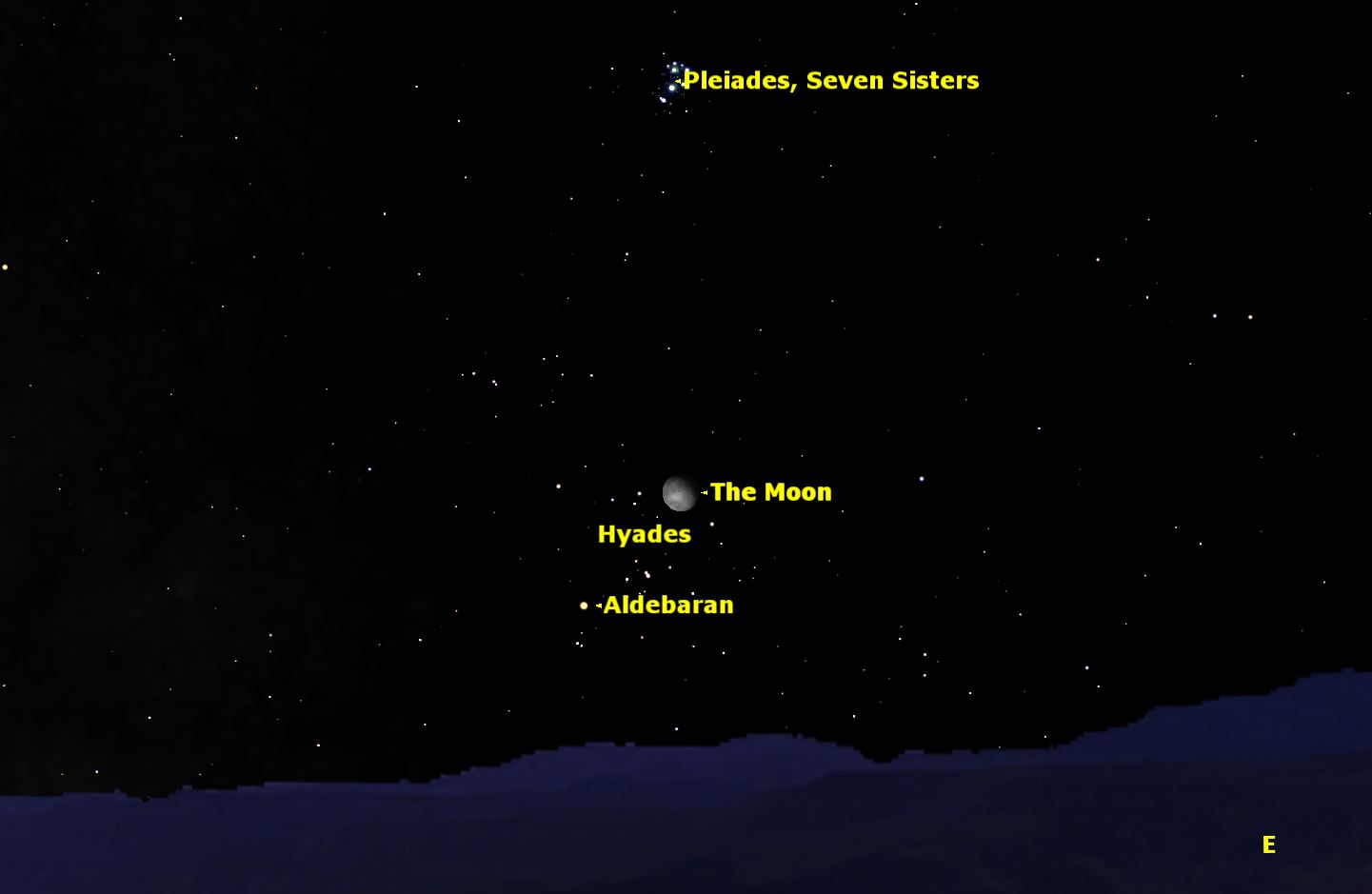 | |||||||||||||||||||||||||||||||||||||||||||||||
| For education orders please call 1-877-290-8256. Welcome to the October Second Week Featured Article! The Moon near Aldebaran and the Pleiades Geoff Gaherty, Starry Night EducationSometimes some of the prettiest sights for skywatchers require no special equipment, but are best appreciated with our unaided eyes. 
Look eastward around 10 p.m. on Saturday, October 11, to see the waning gibbous moon framed by the Pleiades star cluster above and the bright red giant star Aldebaran below. Credit: Starry Night software. This coming Saturday night, October 11, is a case in point. Look eastward around 10 p.m. local time, ad you will see the moon rising against a background of distant stars. The brightest of these stars is Aldebaran, just below and to the left of the moon. Aldebaran is a star in the red giant phase of its evolution, located 67 light years away in the constellation Taurus. The ancients saw Aldebaran as the glowering red eye of the Bull, Taurus. The light we see from Aldebaran left the star 67 years ago in the year 1947, just after World War 2 had ended here on Earth. Behind Aldebaran and the Moon, at a distance of 150 light years, is one of the closest star clusters in our neighborhood of the Milky Way, called the Hyades. The ancients saw the Hyades forming the V-shape of the snout of the Bull. Although the individual stars of the Hyades are fairly dim, they combine to make it the brightest star cluster in the sky. Its light left on its journey towards us in the year 1864, at the height of the American Civil War. Just above the Moon is another star cluster called the Pleiades. This is more than twice as far away as the Hyades, 410 light years distant, but appears much brighter because it contains young hot stars, and is much more concentrated in volume. The light we see now started towards us in the year 1604, just a few years before Galileo first turned his telescope on the skies. By comparison to Aldebaran, the Hyades, and the Pleiades, the Moon is extremely close to us, even though it is at a distance of 237,617 miles (382,408 km). Its light takes just slightly over one second to reach us, reflected sunlight which left the sun only 8 minutes ago. If you continue to watch the moon over the rest of the night, you will see the moon appear to move closer to Aldebaran, passing just north of it around 6 a.m. EDT, just as the sky begins to lighten towards dawn. |
| ||||||||||||||||||||||||||||||||||||||||||||||
© 2016 Simulation Curriculum Corp. All Rights Reserved. |
|||||||||||||||||||||||||||||||||||||||||||||||
